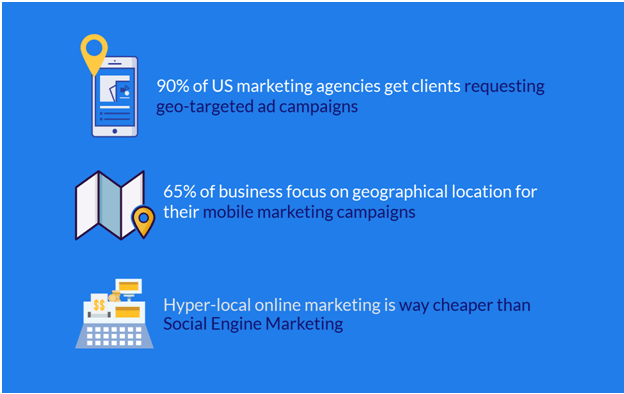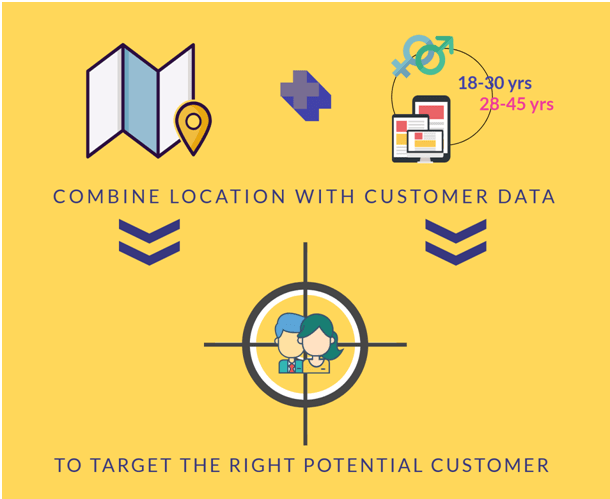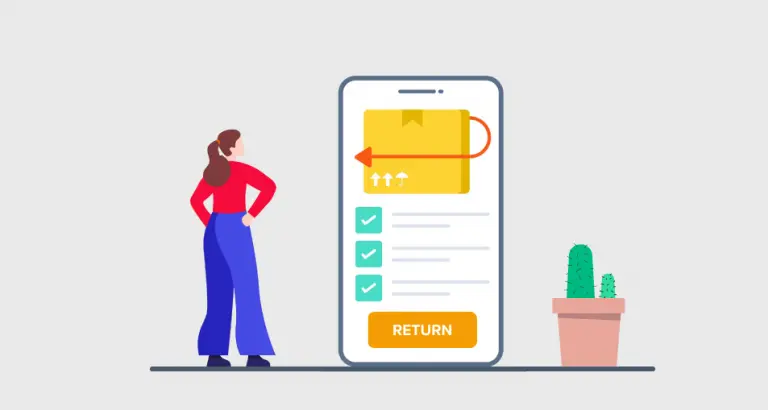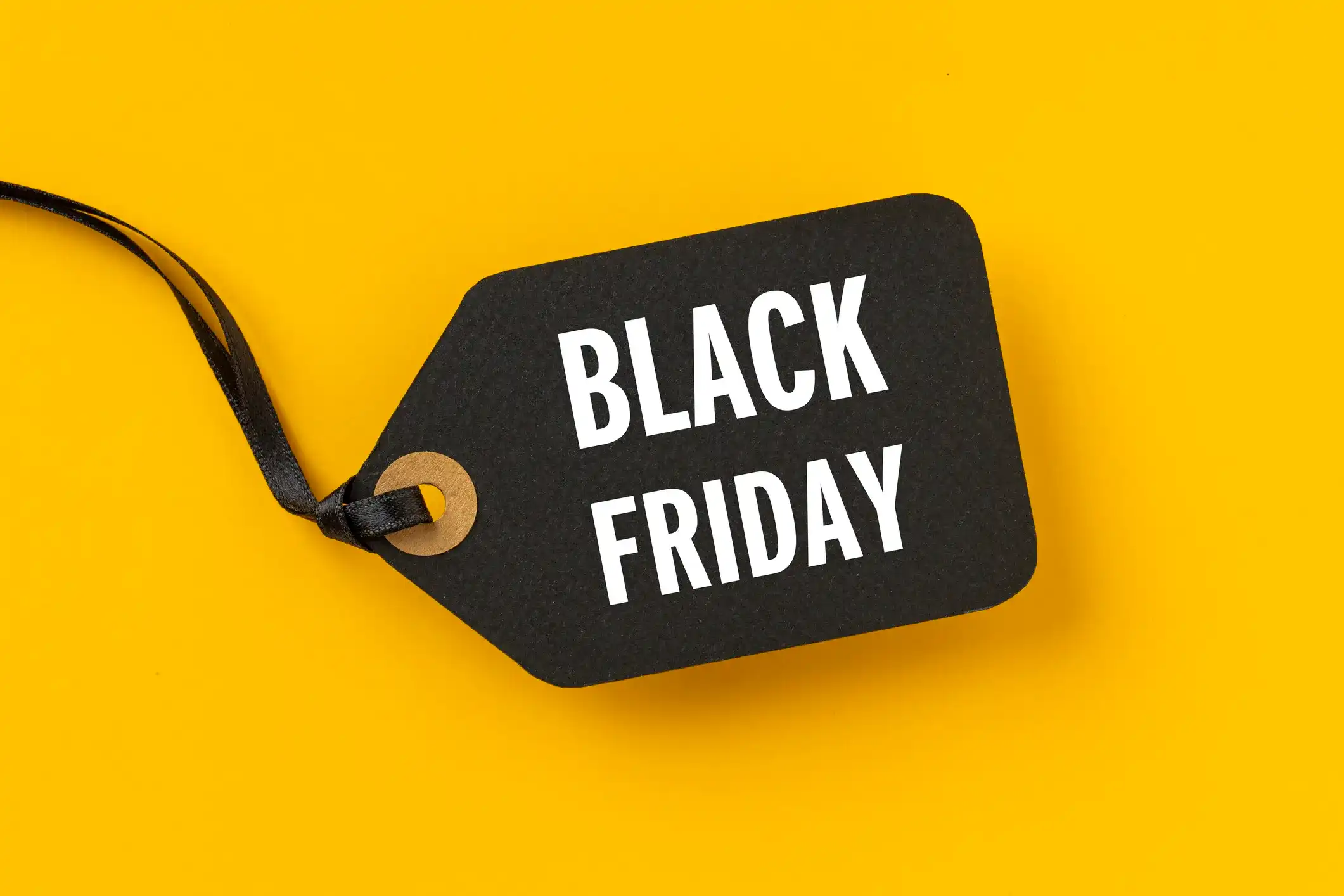5 Geomarketing Hacks To Boost In-Store Sales
Geomarketing for Physical Retailers: 5 Location-based Targeting Hacks to (Actually) Increase Your Footfall and In-Store Sales
Let’s face it, if you believe mobile-first geomarketing techniques can only increase online sales, while traditional billboards and flyers are meant to drive people into stores, then you’re missing out on a major revenue booster!
Are you wondering how you can boost your physical store traffic and sales? There’s a form to request a demo or more information at the end of the article, so please feel free to contact us if you have any questions or want exclusive access to our store analytics and re-targeting ads platform.
Geomarketing (often referred to as geotargeting or location based targeting) has come to be the weapon of choice for countless brick-and-mortars in the past few years. Especially retail stores, supermarkets, restaurants and local events.
Why? Because, geomarketing techniques add a level of smartness to any marketing or outreach strategy.
Geomarketing makes your online ads or any other promotional content 10x more personalised and contextually relevant. Not to mention, instantly setting them up for more conversations.

But wait, what exactly is Geomarketing?
Geomarketing is simply put, using your target customer’s location or geographical data to reach them with better, more contextually-relevant offers and ads.
It includes:
- Geotargeting: Geotargeting essentially hinges on targeting people in a broader general area by detecting their mobile device location. Other targeting factors like age, gender, interests etc can be combined with this geolocation to filter-in or even filter-out who you want to target.
- Geofencing: Geofencing on the other hand, involves setting up a virtual radius or ‘fence’ around a location to target people who enter that particular area.
- Beacon Technology: Beacons are basically small BLE devices (bluetooth enabled) that are triggered when someone is in close proximity of them. They themselves don’t send ads, but instead trigger a signal which then sends an sms, push or in-app message. The downside? Beacons only work when the bluetooth of your target user’s mobile is turned on.
In simple terms, geomarketing technologies basically boost your chances of identifying and reaching the right customers, in the right area.
Yet, very few brick-and-mortars are implementing geomarketing the right way.
At the end of the day, how you implement your geomarketing strategy can cause all the difference between wasting ad dollars(or annoying potential customers) and actually attracting and converting customers.
So without further ado, following are hacks that will turn your geo-local marketing strategy into a fine-tuned revenue generating machine.
5 Location-based Targeting Hacks that will Totally Transform Your GeoMarketing Strategy
Hack #1: There’s gold in your customer intelligence data, use it
(OR: Don’t just identify devices, identify real customers)
Irrespective of the geomarketing technology or campaign (Fb ads, SMS, push, etc) you use to attract people to your physical store, don’t just focus on reaching devices. Focus on your customer’s profile.
Use the information you have about your target audience. Actual data around who your real customers are, not just who you think they could be.Be it their age, gender, how often they shop for the products you sell or even where they hang out- can filter out your ideal customer from the crowd in your target area.
What you know about your current customers can actually help you attract tons of potential customers.

Here a good place to get this valuable information would be to look into your brick-and-mortar store analytics.
The only catch? Getting your hands on this rich, valuable data.
Traditional in-store analytics sadly just don’t make the cut. While, new more intelligent all-in-one geomarketing and retention platforms like Converted.In not only capture this data but also analyse it and present it to you in a way that can actually be used to filter, segment and target ideal customers.
Hack #2: Know how to choose between geo-fencing, geo-targeting or beacon proximity
(OR: Identify what your business needs)
As mentioned earlier, all geomarketing techniques will help you reach potential customers in a target area, but the type you choose can make or break your targeting campaigns.
Depending on your specific goal, you should evaluate the advantages and limitations of each technology.

More specifically, you should use geo-targeting, if:
- You want to target a broad area like a country, city or even zip code. This is ideal for retail chains and supermarkets with many store locations.
- You have access to a ton of customer data to be able to filter out your ideal customers from a big crowd.
Go with geofencing, if:
- You want to target a smaller radius(typically 50-200m) near your store or a competitor’s store nearby
- Your location is king and you already know that your ideal customers are in the area. Practically everyone in that small area could become a customer.
Last but not the least, beacon or ble tech is for you, if:
- You want to target a campaign to people who pass an extremely specific point like say, as aisle in your store or a particular atm near your store.
- You offer an app which users have granted location permissions to.
In essence, the kind of establishment you have and your customers characteristics should define the technology you use.
For instance, it makes sense for restaurants to create a 50m geofence around their outlet and send special offers to people who enter that “fence.”On the other hand, it’s suitable for a music concert to geo-target ticket ads to audiences who live in that city, like music and are in the age group of 18-30.
#Hack 3: Get Creative With the Places You Target
(OR: Think outside the box)
Most retailers currently start by targeting the immediate surroundings of their store and then expanding over time- and there’s no harm in that!
That said, the more creative you are about the places you target, the higher your rewards. Think about the specific spots or areas your ideal customers visit. Are there such places close to your store?
As a real world example, supermarket chain Whole Foods set up geofences around competing supermarkets near their store locations. By targeting special discount ads to mobile users, they managed to grab 3x more shoppers straight from their competitors.
You don’t always need to target your competitors, either.
Say, you’re a sportswear store, you could set up a geofence around a popular local gym. If you sell products for mothers, target nearby schools at drop-off and pick-up times. As an organic cafe, you could hit local vegan events and much more.
Hack #4: Use location and promotion ad extensions for your search and facebook ads
(OR: Make the most of the features at your disposal)
Facebook and Google ads (both search and display) are by no means new to the geomarketing game.
As both platforms encourage offline stores to use online ads and drive in-store footfall, most retailers still making the mistake of ignoring the finer details.
We’re talking about the location and promotion ad extensions features.

The location ad extension as the name suggests, lets you add your store address to your ad and increase conversions by at least 20%. The promotion extension on the other hand displays your store’s current offers within the ad.
When combined together, they make a store appear accessible and value-for-money and instantly bump up conversion rates.
Tip: Key in another layer of filters by targeting specific times of the day (open hours) and location of target user. You’ll end up saving your ad dollars while keeping your ROI high.
#Hack 5: Encourage potential customers to allow you to target them
(OR: Respect customer data and privacy, and they will love you for it)
Data privacy and consumer preference tracking has long been debated in most types of marketing. More so for those that involve location!
Fact is, consumers hate their privacies being breached, unless…they’re actually getting something useful in exchange!
As revealed by a Microsoft study, consumers are willing to share their data in exchange of either valuable discount offers, cash rewards or extremely exclusive benefits. In fact, it points out that:
- 65.2% customers would let you target them for loyalty points
- 89.3% for geo-local discounts
- And a whooping 99.6% customers are willing to be targeted with cash rewards
But you need to ask them to grant permissions, first. This simple customer-centric hack can go a long way in building a good relationship with your customer and keeping bringing them to your store.
Make sure that you hit them with a hard-to-say-no-to offer, at the get go!
Needless to say, don’t misuse the data you track. Refrain from spamming them with persistent offers. Or telling them how you “noticed they visited a nearby store!”
Like most other growth hacks, geomarketing has seen its own share of misuse.
Yet, when done right, it can be highly beneficial for brick-and-mortars in all kinds of markets.
After all, it’s hard to ignore the success stories and dollars generated by smart and cost-effective geomarketing campaigns, by brands big and small.
Get in touch with us for a demo on how Pinoffer can help you leverage geomarketing to take your footfall and in-store revenue to the next level.
[hubspot type=form portal=5623983 id=997a5a0d-e404-414a-80f0-83b634ccf26b]
 By
By


